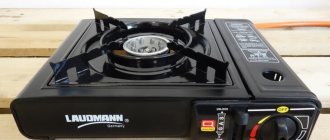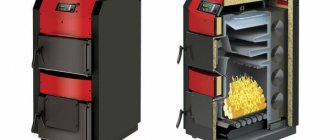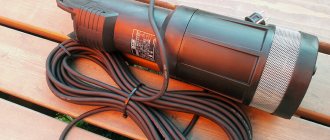There are different models of such devices, which differ in the principle of operation, accuracy and method of adjustment.
The technical parameters of stabilizers must meet the requirements for the supply voltage of electrical appliances connected to it.
The automation of gas boilers is especially sensitive to surges in the household electrical network and quickly fails when the quality of energy is low. Experts advise installing a voltage stabilizer at the installation stage of the heating system, so as not to encounter system shutdowns, freezing and breakdowns in the future.
We have collected for you the best models of protective devices presented on the Russian market in 2021 in terms of price/quality ratio.
When compiling the ratings, we focused on the technical capabilities of voltage stabilizers, price and durability.
Rating of the TOP 15 best voltage stabilizers for gas boilers in 2021
| Place | Name | Price |
| TOP 4 best voltage stabilizers for gas boilers in price/quality ratio for 2021 | ||
| 1 | Resanta ASN-10000N/1-C Lux | Find out the price |
| 2 | ENERGY APC 500 | Find out the price |
| 3 | Defender AVR Typhoon 1000 | Find out the price |
| 4 | Calm IS350 (0.3 kW) | Find out the price |
| TOP 4 best inverter voltage stabilizers for gas boilers | ||
| 1 | Shtil IS1500 (1.125 kW) | Find out the price |
| 2 | RESANTA ACH-600/1-I (0.6 kW) | Find out the price |
| 3 | BAXI Energy 400 (0.35 kW) | Find out the price |
| 4 | Calm IS550 (0.4 kW) | Find out the price |
| TOP 4 best 220 V voltage stabilizers for gas boilers | ||
| 1 | Energy ACH 5000 (2019) | Find out the price |
| 2 | RESANTA LUX ASN-5000N/1-C (5 kW) | Find out the price |
| 3 | ERA SNPT-2000-C | Find out the price |
| 4 | SVEN AVR SLIM 500 LCD (0.4 kW) | Find out the price |
| TOP 3 best voltage stabilizers for 500 W gas boilers | ||
| 1 | RESANTA LUX ASN-500N/1-C (0.5 kW) | Find out the price |
| 2 | ERA SNK-500-M (0.5 kW) | Find out the price |
| 3 | SVEN VR-L1500 (0.5 kW) | Find out the price |
What characteristics of the stabilizer need to be taken into account?
To understand how to choose a voltage stabilizer for a gas boiler, you need to understand its key parameters and their effect on the operation of the heating device. This will help you choose the device that is most suitable for specific operating conditions.
Phasing
Most apartment buildings and private houses are connected to a single-phase 220 V network with a frequency of 50 Hz. To use voltage stabilizers in them, it is advisable to buy single-phase models. There are houses with three-phase input, but each line is divided and produces 220 V. This contributes to a more even distribution of the load and allows the use of the same single-phase stabilizers.
For enterprises and industries where large gas boilers with high power are installed, three-phase 380 V stabilizers will be required. The second option would be to install single-phase equipment, one for each phase, which will be cheaper in total, but will take longer to connect.
Input voltage range and output voltage accuracy
Voltage stabilizers for gas boilers must ensure that the current from the network is brought to the optimal 220 V. Depending on the scale of the voltage drop, stabilizers are also produced with different input current ranges. To find out what parameters to look for a device with, you need to do a little research.
To do this, you need a voltmeter (pointer or digital multitester). The electronic device must be set to an alternating current value with an upper limit of more than 500 V. Measurements should be carried out at different times of the day to see how the indicators change depending on the load on the network. It is optimal to observe during the week and measure the volts at: 6:00, 9:00, 12:00, 15:00, 18:00, 21:00, 24:00 hours. It’s good to have a notebook to record the data received. At the end of the experiment, you can add 10-15 V in each direction to create a small margin.
If testing shows the limits of 180-240 V, then it is with such data that you should look for a voltage stabilizer. Sometimes, outside the city, there may be differences in the network from 140 to 270 V, which will require a different model.
The output voltage of the stabilizer should correspond as much as possible to the performance of the gas boiler. In most cases this is 220 V + -10%. To avoid shutdowns due to lack of power, it is better to choose devices with an output voltage accuracy of +-5%. Then it will completely fit into the data required by the manufacturer and contribute to uninterrupted operation
Power
One of the most important criteria for choosing a voltage stabilizer for a gas boiler is power. First you need to find out what indicator is written in the equipment passport. Boilers have two values: maximum useful thermal power (varies from 6000 to 24000 kW) and power consumption (100-200 W or 0.1-0.2 kW). But during boiler startup, this value may increase by several seconds, so the stabilizer indicator should exceed the boiler data. How long? This will become clear after we learn the remaining components of the calculation.
The second component is VA. These are volt-amperes, which indicate the power of stabilizers. They differ from kW (kilowatts) or W (watts) in that they represent total power, while the latter only represent useful power. As a result, a device with a power of 500 VA will have a rating of 350 W.
The power of the stabilizer must cover not only the consumption of the boiler, but also the associated equipment installed inside or in parallel. This could be a circulation pump, which has its own power rating.
In order for the voltage stabilizer to fully correspond to the boiler and pump, its indicator must take into account the increasing starting currents and have a margin of 30% from the maximum power of the sum of all devices.
Now all this can be fixed by the formula: (boiler power W + pump power W * 3) * 1.3 = stabilizer power VA. For example: boiler - 150 W, and pump - 70 W. We get: (150 W+70 W*3)*1.3 = 468 VA.
But it is also important to take into account voltage sag. If the input current drops, then the ability of the stabilizer to increase it also drops. For example, if there is 170 V in the outlet, the efficiency of the stabilizer will decrease by 80% of the rated power, and at 130 V it will work only at 50% of the declared value. Therefore, the rated power of the stabilizer must be multiplied by the percentage drop and divided by 100.
Let's calculate: if the network is 170 V, which is 80%, then with a stabilization device of 500 VA it will work as if it were 400 VA. For the above example, a 150 W boiler and a 70 W pump, taking into account the 170 V drawdown, you need to look for a 600 VA stabilizer.
Voltage stabilization performance
This parameter is indicated by two units of measurement:
- response speed - measured in volts per second (V/s) and reports the period taken to restore normal output voltage in the event of significant fluctuations in the input;
- response time - indicated by the milliseconds it takes for the device to react to change the network signal.
We recommend reading: Drainage pump: types, technical characteristics, choice, manufacturer
The higher the speed and the shorter the response time, the better the gas boiler is protected during surges, both in one direction and the other. The highest quality voltage stabilizers have a first rating of 100 V/s and higher. This allows the protective equipment to respond almost instantly. Data of 10-20 V/s indicate some delay, sufficient for short-term incorrect operation of the boiler.
The response time is considered good from 5 ms or less. 10ms will be quite acceptable, and 20ms will be satisfactory. Large values already imply some risk. Inverter devices use double current conversion, so they do not have a speed parameter.
Output voltage form
Alternating current is indicated by a wavy line due to its changing frequency. On the scale it has the shape of a sine wave. In order for a gas boiler to operate stably and correctly, the voltage must be as close as possible to an ideal sinusoid. A clean output signal will not create errors or malfunctions in the electronics.
How to choose a voltage stabilizer for gas boilers?
When choosing a device for protection against power surges, the main criteria should be the electrical power of the boiler itself and the parameters of the household electrical network to which it is connected.
- Voltage range . To know within what limits this parameter varies in your electrical network, invite a power quality control specialist. He will make all the necessary measurements and give recommendations for eliminating internal wiring problems, if any. Don't neglect this step! If you cannot influence the problems with overload of the transformer substation, then it is within your power to eliminate incorrect installation of electrical wiring or redistribute the load inside the house. This will protect expensive household appliances and save you money when buying a voltage stabilizer - the wider its range, the more expensive it is.
- Electric power of a gas boiler . This parameter is indicated in the technical data sheet of the equipment. Most gas boilers consume 100-200 W, but at peak load the power increases. When choosing a stabilizer, make a power reserve of 10-15% under normal power quality parameters and up to 2 times when the voltage drops in the mains up to 140 V.
- Supply line type . Choose a single-phase or three-phase device, depending on the electrical network to which it will be connected.
- Stabilization accuracy . The permissible maximum values are indicated in the technical documentation for the gas boiler, for example: 220 V ±5%.
- Mounting type . Voltage stabilizers for gas boilers are of floor and wall type. Consider how you will place the device when installing the heating system.
- Duration of operation and manufacturer's warranty . Inexpensive Chinese stabilizers last no more than 2-3 years. Manufacturers of Russian devices indicate in the documentation the service life of devices at 5-10 years.
How to connect
Manufacturers of stabilizers clearly state in the instructions how to turn on the device. First of all, you need to prepare a workplace, which must be dry. Further, the installation takes place in such a way that there is an unobstructed approach to the device.
At the same time, it must be taken into account that the regulator is air cooled. For this reason, a lot of free volume in front of it will be required. Therefore, placing it in a sideboard or drawer is prohibited. And the last limitation is that the installation is placed away from fire-hazardous building materials.
A monophase device is connected via a standard socket. The plug with the adjusted network values is connected to the socket on the boiler body.
We recommend reading: Single-pipe and two-pipe heating systems: which is better, advantages and disadvantages, what to choose
Based on the above, it can be argued that a stabilizer is needed for the gas boiler to function correctly and not be damaged by failures in the power grid.
The specific conditions of the power supply and the power of the equipment being protected will determine which voltage stabilizer will best cope with its tasks.
What type of voltage stabilizer should I choose?
Depending on the type of adjustment, protective devices can be either smooth or discrete (stepped). The stabilization accuracy of devices of the second type depends on the number of steps and their size.
According to the principle of action, stabilizers are divided into groups:
- Electromechanical . Voltage regulation occurs by moving the autotransformer brush, which is moved by the servo drive. Mechanical type devices provide smooth and precise stabilization. They are resistant to voltage surges and quickly respond to changes in power supply parameters. However, due to wear and tear on moving parts, they require regular maintenance.
- Electronic . The devices operate on semiconductor elements - triacs, which serve as power switches. Electronic stabilizers are characterized by fast response, silent operation, the ability to withstand overloads for up to 12 hours and a long service life. The adjustment occurs on a discrete principle, with an accuracy of ±2.5%, for the most expensive models - up to 1%. Another advantage of triac models is their compactness. Please note that electronic stabilizers are more expensive than servo and relay ones.
- Relay . The simplest and most inexpensive devices. They are characterized by low output adjustment accuracy ±5-10%, so they are not suitable for all models of gas boilers. Their other disadvantages: noise, slow response, low reliability, inability to withstand overloads.
- Inverter . They are distinguished by a wide range of operating input voltage (115-300 V) and an efficiency of more than 90%. Also, these devices provide the smoothest and fastest adjustments, operate without noise and are easy to install due to their compact size. Disadvantages: high cost and sensitivity to increased load.











